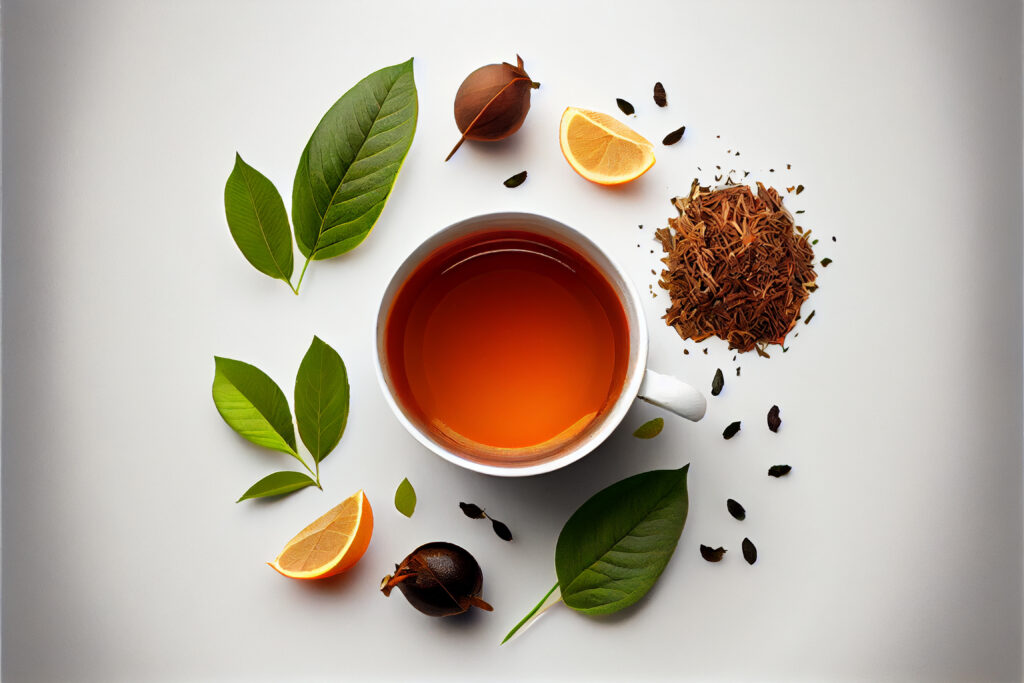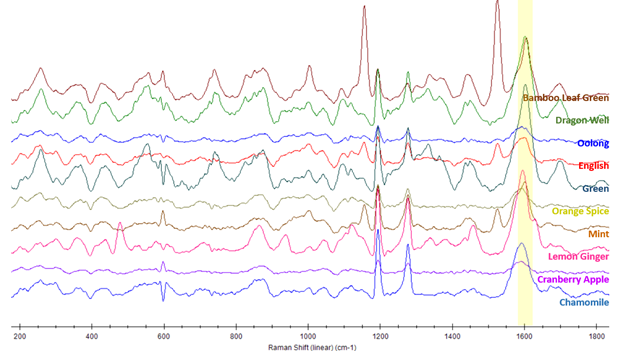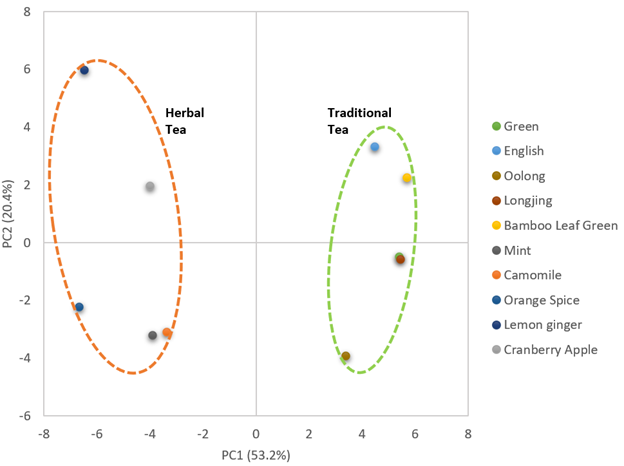
Tea is a beverage that originated in China about five thousand years ago1. Traditional tea is made from the leaves of Camellia sinensis. Flavor, color, and aroma are determined by variations in processing, growing conditions, the part of the plant used, and brewing steps. Another tea type is herbal tea made from plants like chamomile, mint, and ginger. Herbal teas are popular among people who want to enjoy the flavor and health benefits of plant-based drinks without the stimulating effects of caffeine.
Raman spectroscopy is a promising technique in food science due to its ability to provide rapid and non-destructive analysis of samples. For instance, we have previously explored the Raman spectra of olive oils using the B&W Tek i-Raman® Plus-785 system (Fast Ingredient Analysis of Edible Oils Using a Portable Raman Spectrometer). Regular Raman spectroscopy can be applied to investigate properties of traditional/herbal tea, and when Raman is coupled to SERS technology it can be used to detect trace pesticides (ug level) on tea leaves (Trace Detection of Paraquant in Tea Leaves). However, some dark-colored teas, like Black tea and Oolong tea, are not optimal for 785 nm systems because of the fluorescence. This problem can be resolved using B&W Tek’s 1064 nm handheld systems like NanoRam®-1064 or laboratory Raman systems like i-Raman EX (1064 nm Raman Excitation of Fluorescent Pumpkin Seed Oil).

Figure 1. Raman spectra of different teas collected using 1064 nm Raman instrument. Baseline correction and S-G smoothing applied.
Figure 1 shows Raman spectra of ten different traditional (5) and herbal teas (5) collected with a 1064 nm Raman system. Raman bands, like 1604 cm-1, common among all tested samples, could be related to lignin2, an organic polymer that supports the tissues of most plants. The Raman profiles of teas were very different, even between similar tea types, like Green Tea and Bamboo Leaf Green, indicating different chemical compositions. But some spectra were very similar, like Green Tea and Dragon Well Tea.
Because of the complexity of the Raman spectra, it is impossible to analyze the results without an analysis software like BWIQ® – chemometric software from B&W Tek. Figure 2 shows a PCA built using BWIQ (Fig. 2). As you can see, traditional tea can be separated from the herbal teas utilizing the model.

For more information about B&W Tek’s Raman systems, visit https://bwtek.com/technology/raman/.
1. Sivasubramaniam, S. “Tea”. Encyclopedia Britannica, 2022. https://www.britannica.com/topic/tea-beverage (Accessed 1/30/2023).
2. Gupta, S et al., 2020, Sci Rep 10, 20206 (2020). https://doi.org/10.1038/s41598-020-76485-5


 Looking for something specific?
Looking for something specific?





